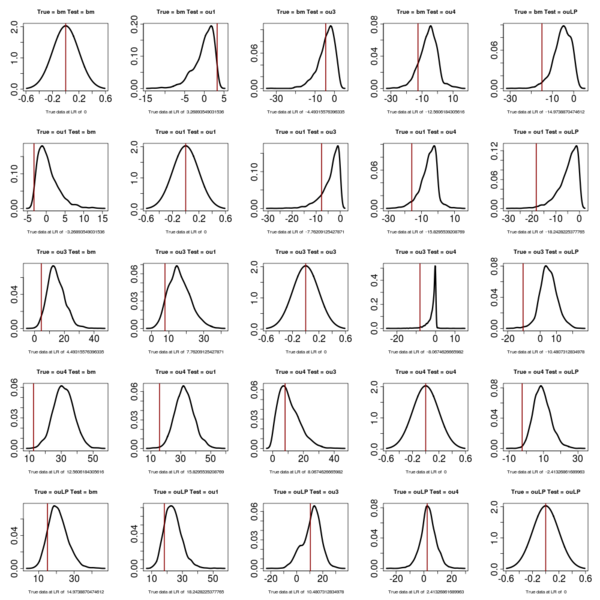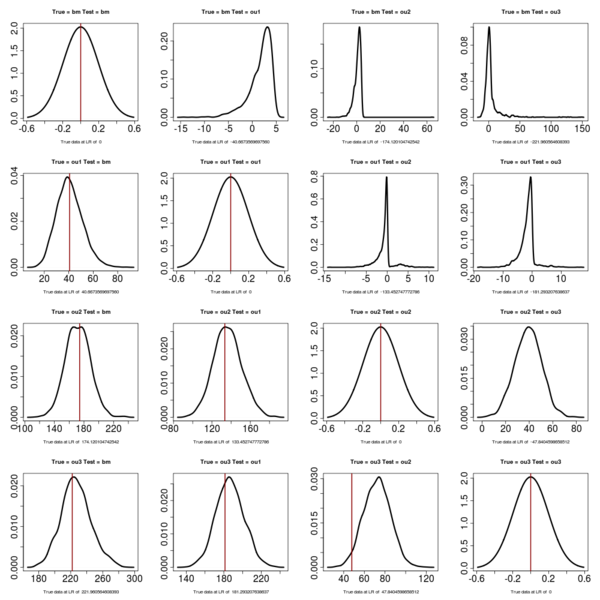- Bootstrapped against 2000 replicate simulations overnight on both the Anoles dataset and the Labrids dataset.
- Distributions that overlap zero represent replicates that choose the wrong model.
- The Anoles data below; the first column corresponds to the likelihood ratios shown in Butler & King (2004), comparing each model against BM.

- The Labrid dataset:

Find matching figures for the case of parameters held fixed on more recent entry
Recall I simulate the dataset under the model labeled “true” and then evaluate the likelihood ratio of that model vs the test model. So along a row data is produced by simulation of the same model. The pattern is basically that the upper triangle of the matrix (simulate simple, compare to complex) always has negative LR for the true data but a very positive distribution of LRs. It’s still a bit surprising to me that when data simulated under the simpler model that the simple model should always drastically outperform the complex one in LR, but it does.
Discussion w/ Peter
- Bootstraps in this implementation refit the model to the simulated data each time.
- This largely comes from relying on the behavior of the built-in functions: the bootstrap call and the update call on ouch models both refit the model.
Computing
- R objects can have multiple classes. For instance, in ouch, a hansentree and a browntree are both also of class ouchtree. To check if an object is a member of a class, calling class(object) directly only returns the top class. use:
is(object, "classname")to check if the object is a member of a class.
- Was trying to figure out the best way for an R function to return multiple objects, particularly when those objects are complicated classes and not just things that can be concatenated into a data.frame, equivalent to an array of pointers to objects in C. A vector of type “list” does the trick:
out <- vector("list", 5)
out[[1]] <- object 1etc.
- Trying to include more error handling in my codes. For instance, checking classes of objects
if (!is(tree,'ouchtree'))
stop(sQuote("tree")," must be an object of class ",sQuote("ouchtree"))- Trying to start following Google’s literate programming inline documentation for functions in R. The standard R documentation method really encourages writing documentation after writing the code, rather antithetical to literate programming.